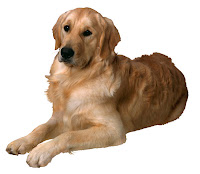As we get older we slow down and our bodies require less fuel to keep us going. The same is true for our aging companions. A little education about what makes for a good older dog diet can certainly make shopping for the right food much easier and more importantly it will help FiFi age gracefully.
The right food in an old dog diet is really important. Without it, FiFi’s coat may become dull and she may develop skin allergies. You may see a loss of vigor in her and worst of all she may develop gastrointestinal problems which will cause diarrhea and vomiting. So what, exactly, constitutes a good diet for an old dog?
The right amount of protein. 20 – 30% of the total calories should come from good protein.
The right amount of fat. Fat contents vary from dry to canned food. In dry food look for 7-12% fat. In canned food the fat content should be between 5-8%.
A diet high in fiber. Old dogs are prone to constipation so giving them more fiber will help alleviate this. If your dog is challenged with constipation consider adding a little wheat bran to her dog food.
The right quantity of food. As dogs age they slow down and they don’t need the same quantity of food they ate when they were younger. Check with your vet to determine the right amount of food or experiment with FiFi. If she leaves food, remove her bowl from the floor. Even if she is hungry later she likely won’t eat the stale food and you won’t know if it was a quantity or quality issue.
Feed FiFi twice a day – even if you used to feed her once a day. This will prevent her from getting hungry and “scarfing down” food when you do feed her. Remember, if your dog eats her food too quickly she also inhales air which may cause bloat.
Add people vegetables to her food or give them to her for treats. As dogs age, they begin to lose their sense of taste. People food is very tasty to dogs and fruits and vegetables won’t add to her weight. You’ll want to stay away from the vegetables that cause gas in people; they also cause gas in dogs. Good vegetables for dogs are carrots, cucumbers or zucchini and fresh green beans. In addition to tasting good they provide a good dose of antioxidants and fiber to FiFi’s diet. Some experts suggest up to 20% of your dog’s diet should be comprised of vegetables.
There are very few vegetables that you cannot feed your dog but take note – onions and garlic are toxic to dogs. It’s unlikely you’d select these vegetables as you can only imagine how bad a dog’s breath would smell from eating these. But in case you were considering it…don’t do it!
Many aging dogs also find it difficult to chew hard food, like dry food. Soften the dry food by soaking it in warm water for a minute or two before feeding it to FiFi. If you’re adding vegetables to her food, cook them in order to make them softer for her to chew.
Feed your older dog her food at room temperature. If you keep canned food in the fridge, warm it up just a bit before giving it to her. As above, soaking dry food in warm water will also bring the food to a temperature that is more palatable to an old dog.
Be sure to keep her water bowl filled with fresh water. As dogs age their kidneys become diminished and often times the dogs naturally drink more water to compensate for the slower kidney functions.


